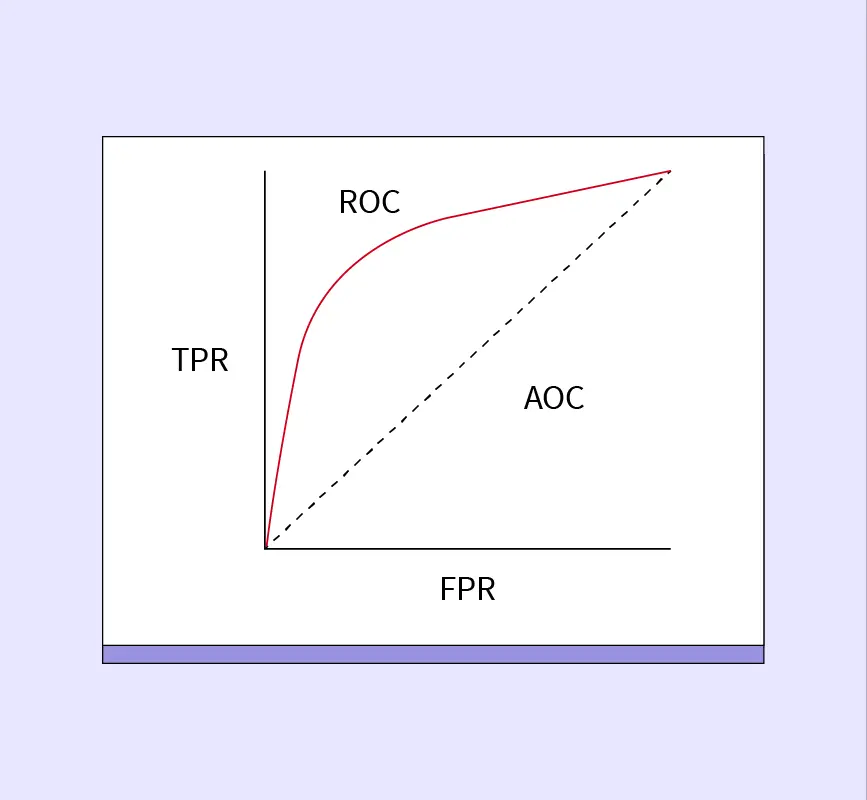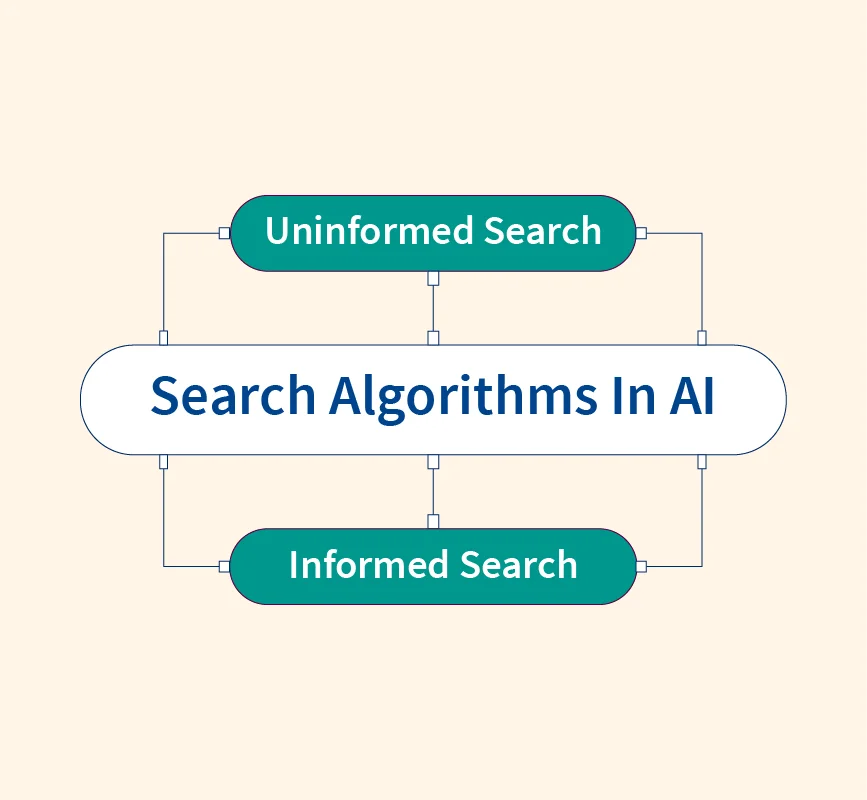Radial Basis Functions (RBF) play an essential role in Machine Learning, particularly in addressing non-linear problems. They are used to approximate complex functions, classify data, and solve regression tasks efficiently.
RBFs became popular in the late 1980s when Broomhead and Lowe introduced RBF Neural Networks, offering a new way to handle non-linear relationships in data. Since then, RBF networks have been widely applied in areas like pattern recognition, time-series prediction, and control systems.
In this article, we will break down the concept of Radial Basis Functions, their architecture, training process, and applications in a simple, beginner-friendly way.
What are Radial Basis Functions?
A Radial Basis Function (RBF) is a type of mathematical function whose value depends only on the distance from a central point. In Machine Learning, RBFs are commonly used to model non-linear relationships, making them effective for tasks like function approximation, classification, and regression.
Mathematical Definition
The Radial Basis Function is defined as:
$$\phi(r) = \phi(\|x – c\|)$$
Where:
- $x$: Input data point
- $c$: Center of the RBF
- $\|x – c\|$: Euclidean distance between the input $x$ and center $c$.
- $\phi$: The radial function applied to the distance.
The value of the RBF decreases or increases depending on the distance between the center and the input point.
How Do RBF Networks Work?
Radial Basis Function (RBF) Networks are a type of artificial neural network that use radial basis functions as activation functions. They are particularly useful for solving non-linear problems by approximating complex relationships in the data.
Unlike traditional feedforward neural networks, RBF networks work with a localized learning approach, focusing on data points close to specific centers.
Structure of RBF Networks
RBF Networks consist of three layers:
- Input Layer
- This layer takes the input features and passes them to the hidden layer.
- It does not perform any computation.
- Hidden Layer
- The hidden layer contains RBF neurons, where each neuron uses a radial basis function (commonly Gaussian) to compute the distance between the input and its center.
- The activation function determines the output of each neuron based on the distance:
$$\phi(\|x – c\|) = e^{-\frac{\|x – c\|^2}{2\sigma^2}}$$
- c: Center of the neuron.
- σ: Spread parameter that defines how far the influence of the neuron extends.
- Output Layer
- This layer combines the outputs from the hidden layer using a linear combination of weights to produce the final prediction.
- Mathematically:
$$y(x) = \sum_{i=1}^n w_i \, \phi(\|x – c_i\|)$$
- $w_i$: Weight for each RBF neuron.
How RBF Networks Work – Step-by-Step
- Input Data: Features from the input layer are passed to the hidden layer.
- Distance Calculation: Each RBF neuron calculates the distance between the input point and its center.
- Activation: The distance is transformed using the RBF activation function (e.g., Gaussian). Neurons closer to the input have higher activation.
- Linear Combination: The activated values from all neurons are linearly combined in the output layer using weights.
- Output Generation: The network produces the final output, which can be used for classification or regression tasks.
Key Characteristics of RBFs
Radial Basis Functions (RBFs) have several unique characteristics that make them effective for solving non-linear problems in machine learning. These properties enable RBF networks to approximate complex functions and recognize patterns efficiently.
1. Localized Response
- RBFs respond strongly to input points that are close to their center and weakly to points farther away.
- This property allows the network to focus on local regions of the input space, making it ideal for capturing local data patterns.
- Example: In a Gaussian RBF, the activation is highest when the input point is near the center and decreases as the distance increases.
2. Smooth Interpolation
- RBFs provide a smooth and continuous transition between data points.
- This makes RBF networks highly effective for interpolation tasks where smoothness between points is essential.
- Example: In function approximation, RBFs can create a smooth curve that fits the given data points seamlessly.
3. Universal Approximation
- RBF networks are universal approximators, meaning they can approximate any continuous function given enough RBF neurons and appropriate parameters.
- This property makes them highly flexible for modeling complex relationships in non-linear data.
4. Non-Linear Activation
- The activation function in the hidden layer of RBF networks (e.g., Gaussian function) is inherently non-linear.
- This non-linearity allows RBF networks to map input data into a higher-dimensional space, enabling better separation of data for classification tasks.
5. Radial Symmetry
- RBFs are radially symmetric, meaning their output depends only on the distance from the center, not on the direction.
- This simplifies computations, as the activation depends solely on how far the input is from the center.
Architecture of RBF Networks
The Radial Basis Function (RBF) Network has a simple and structured architecture consisting of three layers: Input Layer, Hidden Layer, and Output Layer. Each layer plays a specific role in processing the input data and generating predictions.
1. Input Layer
- Role: The input layer receives the features of the input data and passes them to the hidden layer.
- Description:
- Each node in the input layer corresponds to a single input feature.
- The layer does not perform any computation; it simply forwards the input data.
Example:
For a dataset with 3 features (e.g., height, weight, and age), the input layer will have 3 nodes.
2. Hidden Layer
The hidden layer is the most important part of an RBF network, where the Radial Basis Functions are applied.
Key Features of the Hidden Layer:
- RBF Neurons:
- Each neuron in the hidden layer has a center and computes the distance between the input point and its center.
- Activation Function:
- Radial Basis Functions (e.g., Gaussian) are used as activation functions.
- The activation is highest when the input is close to the center and decreases as the distance increases.
- Gaussian RBF Example:
$$\phi(\lVert x – c \rVert) = e^{-\frac{\lVert x – c \rVert^2}{2\sigma^2}}$$
- $x$: Input point.
- $c$: Center of the neuron.
- σ: Spread parameter, controlling the radius of influence of the neuron.
- Localized Response:
- Each RBF neuron responds to a local region of the input space.
Example: For an input point $x$, the hidden layer calculates the activation of each RBF neuron based on its distance to the neuron’s center.
3. Output Layer
- Role: The output layer combines the outputs of the hidden layer to produce the final prediction.
- How It Works:
- The outputs of the RBF neurons are linearly combined using weights.
- Mathematically, the output is:
$$y(x) = \sum_{i=1}^n w_i \, \phi(\|x – c_i\|)$$
- $w_i$: Weight for the $i^{th}$ RBF neuron.
- $\phi(\|x – c_i\|)$: Activation value of the ithi^{th}ith neuron.
- Final Prediction:
- For regression, the output is a continuous value.
- For classification, the output is the predicted class label.
Visual Representation of RBF Network
+------------------+ +-----------------------+ +------------------+
| Input Layer | | Hidden Layer | | Output Layer |
| (Features) | ----> | RBF Neurons | ----> | (Final Output) |
| | | (Activation Functions)| | |
+------------------+ +-----------------------+ +------------------+ Training Process of Radial Basis Function Neural Network
The training process of an RBF Neural Network involves determining the parameters required for the hidden layer and output layer. The process can be divided into three key steps: selecting centers, determining spreads, and training the output weights.
Step 1: Selecting the Centers
The centers of the radial basis functions in the hidden layer are crucial because they determine the network’s ability to approximate functions or classify data effectively.
Methods for Selecting Centers:
- Random Selection
- Centers are chosen randomly from the training data.
- Simple and quick but may result in suboptimal performance.
- K-Means Clustering
- The training data is grouped into kkk-clusters using the k-means algorithm.
- The centroids of these clusters serve as the centers for the RBF neurons.
- This ensures that centers are representative of the data distribution.
Example:
In a dataset with 500 points, k-means clustering can select 10 centers that best represent the entire dataset.
Step 2: Determining the Spread Parameters (σ\sigmaσ)
The spread parameter (σ\sigmaσ) controls the width of the radial basis functions. It determines how far a neuron’s influence extends.
Key Points:
- A small spread makes the neuron sensitive to nearby data points, leading to high variance (overfitting).
- A large spread covers more data points but may result in underfitting.
Methods for Setting Spread:
- Average Distance Between Centers
- Spread can be set based on the average distance between selected centers.
- Cross-Validation
- Multiple spreads are tested, and the one providing the best performance on validation data is chosen.
Example:
If the average distance between centers is 2.0, the spread parameter can be set to 2.0 or slightly higher.
Step 3: Training the Output Weights
Once the centers and spreads are fixed, the output weights are calculated to minimize the prediction error.
Process:
- Compute the activation values for each RBF neuron using the input data and centers.
- Use linear regression to determine the weights www that minimize the error between predicted and actual outputs.
- Regularization techniques can be applied to prevent overfitting.
Mathematical Formula:
$$y(x) = \sum_{i=1}^n w_i \, \phi(\|x – c_i\|)$$
Advantages and Disadvantages of RBF Networks
Advantages of RBF Networks
- Faster Training: RBF networks require training only the output layer weights using simple techniques like linear regression, making them faster to train compared to traditional neural networks that require backpropagation.
- Effective for Non-Linear Problems: RBFs can efficiently model complex, non-linear relationships between input and output data due to their localized response.
- Localized Learning: Each neuron focuses on a specific region of the input space, allowing the network to capture local patterns effectively.
- Smooth Interpolation: RBF networks provide smooth transitions between data points, making them ideal for tasks like function approximation and regression.
- Universal Approximation: RBF networks are universal approximators, meaning they can approximate any continuous function if enough neurons are provided.
Example: RBF networks are effective in applications like time-series prediction, where data relationships are highly non-linear.
Disadvantages of RBF Networks
- Scalability Issues: As the size of the dataset increases, the number of RBF neurons (centers) required also increases, leading to higher computational costs.
- Sensitivity to Center Selection: The performance of RBF networks depends heavily on how well the centers are chosen. Poor center selection can degrade the accuracy of the model.
- Choosing the Spread Parameter (σ): Determining the appropriate spread (σ\sigmaσ) for RBF neurons is challenging. Incorrect spread values can lead to underfitting or overfitting.
- Performance on High-Dimensional Data: RBF networks may struggle with high-dimensional data, as the distance-based calculations become computationally expensive.
- Memory Usage: Storing centers, spreads, and weights can consume significant memory for large datasets.
Applications of RBF Networks
Radial Basis Function (RBF) Networks are widely used in various fields due to their ability to model non-linear relationships and approximate complex functions. Their localized learning and smooth interpolation make them suitable for diverse machine learning tasks.
1. Function Approximation
RBF networks are used to approximate unknown mathematical functions with high accuracy.
- How it Works: By combining RBF neurons with appropriate centers and spreads, the network can model complex functions smoothly.
- Example: Predicting physical processes in engineering, like temperature distribution or signal processing.
2. Time-Series Prediction
RBF networks are effective in forecasting future values based on historical data.
- Use Case: Predicting stock prices, weather forecasts, or electricity consumption.
- Why RBF Networks?: Their ability to handle non-linear trends makes them ideal for time-series analysis.
Example: Forecasting daily stock prices based on previous trends.
3. Classification Tasks
RBF networks are commonly applied in pattern recognition and classification tasks.
- How it Works: Data points are mapped to a higher-dimensional space using radial basis functions to separate classes effectively.
- Use Case: Image classification, handwritten digit recognition, and text categorization.
Example: Recognizing handwritten digits in the MNIST dataset.
4. Control Systems
RBF networks are used in adaptive control systems to model and control dynamic systems.
- Use Case: Robotics, automotive systems, and industrial automation.
- Why RBF Networks?: Their ability to approximate system behavior helps in designing control mechanisms.
Example: Controlling robotic arm movements using RBF-based models.
5. Image Processing
RBF networks are applied for tasks such as image reconstruction and object recognition.
- Use Case: Enhancing image quality, denoising images, and segmenting objects in computer vision.
Example: Restoring blurred images using RBF interpolation techniques.
6. Anomaly Detection
RBF networks help identify outliers or unusual patterns in datasets.
- Use Case: Fraud detection in financial transactions and fault detection in manufacturing systems.
Example: Detecting fraudulent credit card transactions based on unusual spending patterns.
Conclusion
Radial Basis Function (RBF) Networks are an effective solution for non-linear problems in classification, regression, and function approximation. Their simple architecture, using localized radial basis functions, allows them to capture complex patterns efficiently.
Key Highlights:
- RBF networks are universal approximators, making them ideal for modeling non-linear relationships.
- They are widely applied in tasks like time-series prediction, pattern recognition, and control systems.
- Challenges like center selection and spread determination must be carefully managed for optimal performance.
With their ability to handle localized learning, RBF networks hold great potential for future advancements in AI applications like robotics, anomaly detection, and computer vision.


